Apollo 16 Mission
Apollo 16 launched on 21 April 1972. Captain John W. Young, USN, served as commander of Apollo 16 and Lieutenant Commander Thomas K. Mattingly II, USN, was command module pilot. Captain Young was the ninth man to walk on the moon, walking in the Descartes highlands landing site. During the 11 day, 1 hour and 51 minute mission, the crew drove over 16 miles and collected 213 lbs of lunar material using the Lunar Roving Vehicle. Recovery was by HC-1 helicopters from USS Ticonderoga (CVS-14).
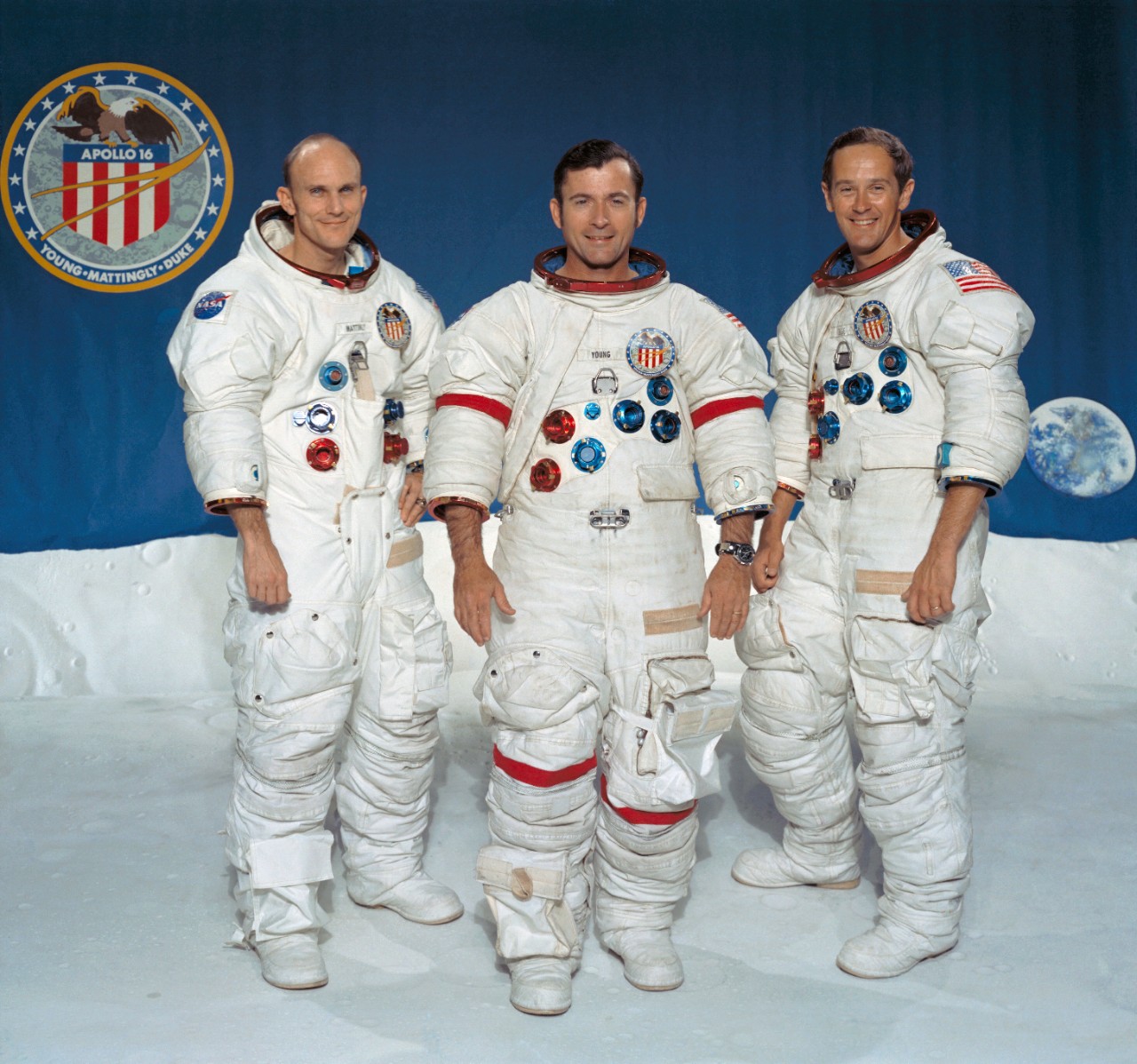
These three astronauts were selected by NASA as the prime crew of the Apollo 16 lunar landing mission. They are, left to right, Thomas K. Mattingly II, command module pilot; John W. Young, commander; and Charles M. Duke Jr., lunar module pilot. While astronauts Young and Duke descend in the Lunar Module (LM) to explore the moon, astronaut Mattingly will remain with the Command and Service Modules (CSM) in lunar orbit. (Image Credit: NASA)
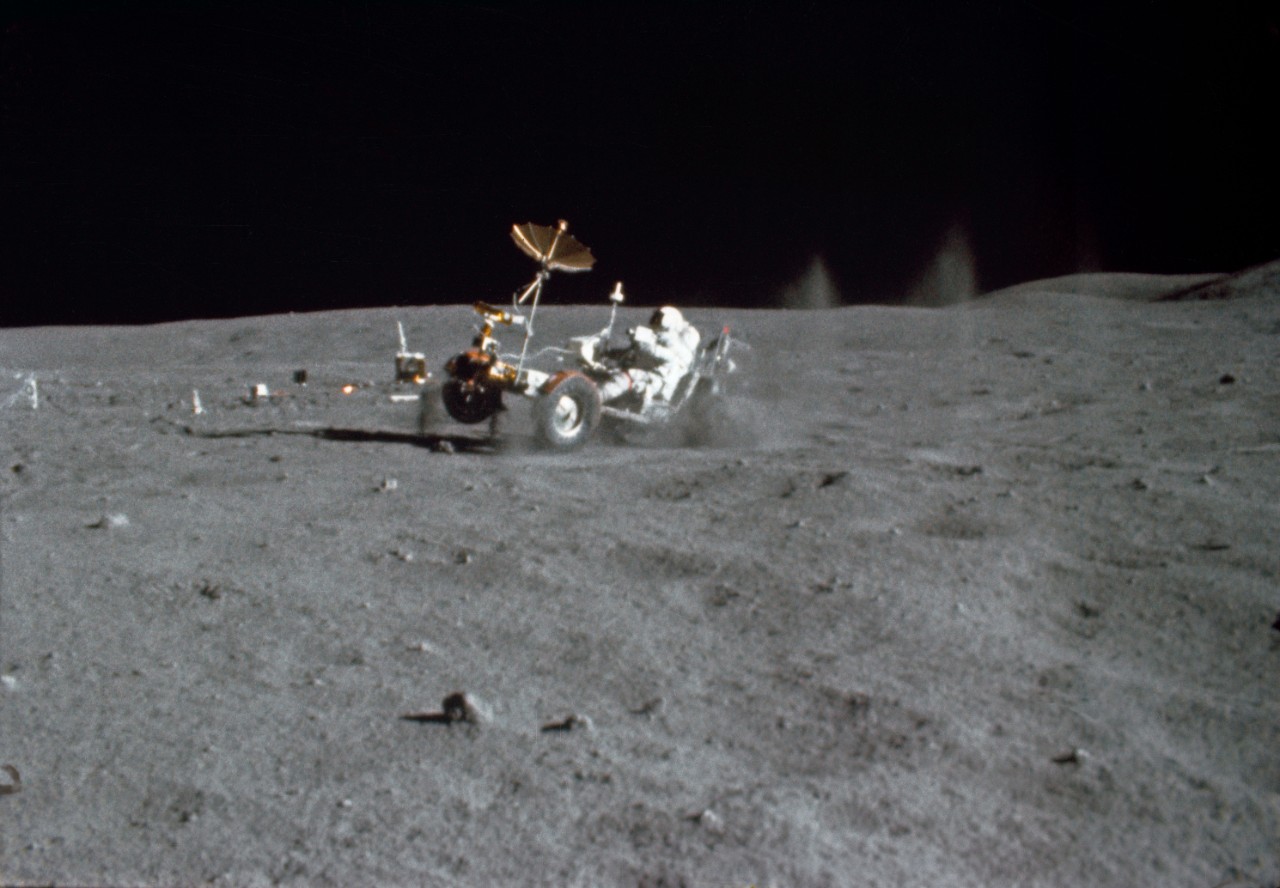
The Lunar Roving Vehicle (LRV) gets a speed workout by astronaut John W. Young in the “Grand Prix” run during the first Apollo 16 spacewalk at the Descartes landing site on 21 April 1972. This view is a frame from motion picture film exposed by a 16mm Maurer camera held by astronaut Charles M. Duke Jr. While astronaut's Young, commander, and Duke, lunar module pilot, descended in the Lunar Module (LM) “Orion” to explore the Descartes highlands region of the moon, astronaut Thomas K. Mattingly II, command module pilot, remained with the Command and Service Modules (CSM) “Casper” in lunar orbit. (Image Credit: NASA)
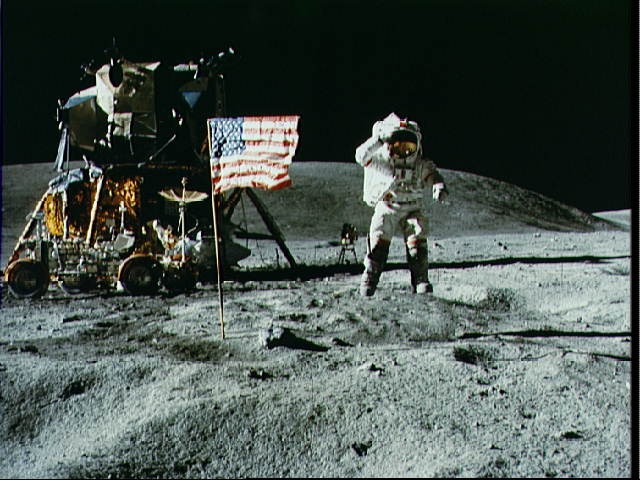
Astronaut John W. Young, commander of the Apollo 16 lunar landing mission, leaps from the lunar surface as he salutes the U.S. Flag at the Descartes landing site during the first Apollo 16 extravehicular activity (EVA-1). Astronaut Charles M. Duke Jr., lunar module pilot, took this picture. The Lunar Module (LM) “Orion” is on the left. The Lunar Roving Vehicle is parked beside the LM. The object behind Young in the shade of the LM is the Far Ultraviolet Camera/Spectrograph. Stone Mountain dominates the background in this lunar scene. (NASA Photo ID: AS16-113-18339)
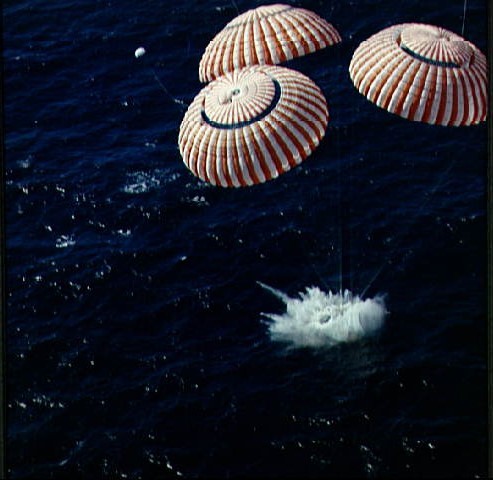
The Apollo 16 spacecraft touches down in the central Pacific Ocean at the end of its mission. Splashdown occurred at 1:45:06 p.m., Thursday, 27 April 1972, at coordinates of 00:45.2 degrees south latitude and 156:11.4 degrees west longitude, a point approximately 215 miles southeast of Christmas Island. All its parachutes are fully deployed. (NASA Photo ID: S72-36293)
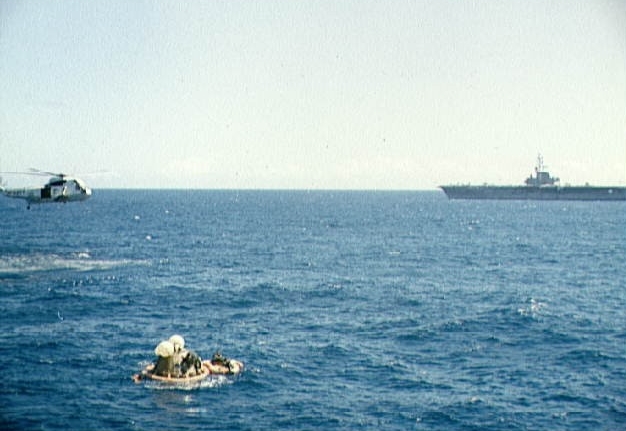
The Apollo 16 Command Module is photographed in the waters of the central Pacific Ocean during recovery operations. The prime recovery ship, USS Ticonderoga, is in the background. A recovery helicopter hovers overhead. The splashdown occurred at 1:45:06 p.m., Thursday, April 27, 1972, at coordinates of 00:45.2 degrees south latitude and 156:11.4 degrees west longitude, a point approximately 215 miles southeast of Christmas Island. A team of Navy divers assisted with the recovery operations. (NASA Photo ID: S72-36602)
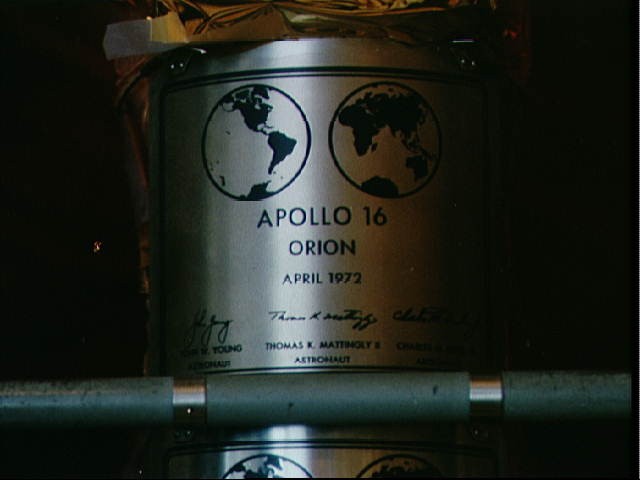
View of a replica of the plaque left on the moon by the Apollo 16 crew. (NASA Photo ID: S89-36956)


